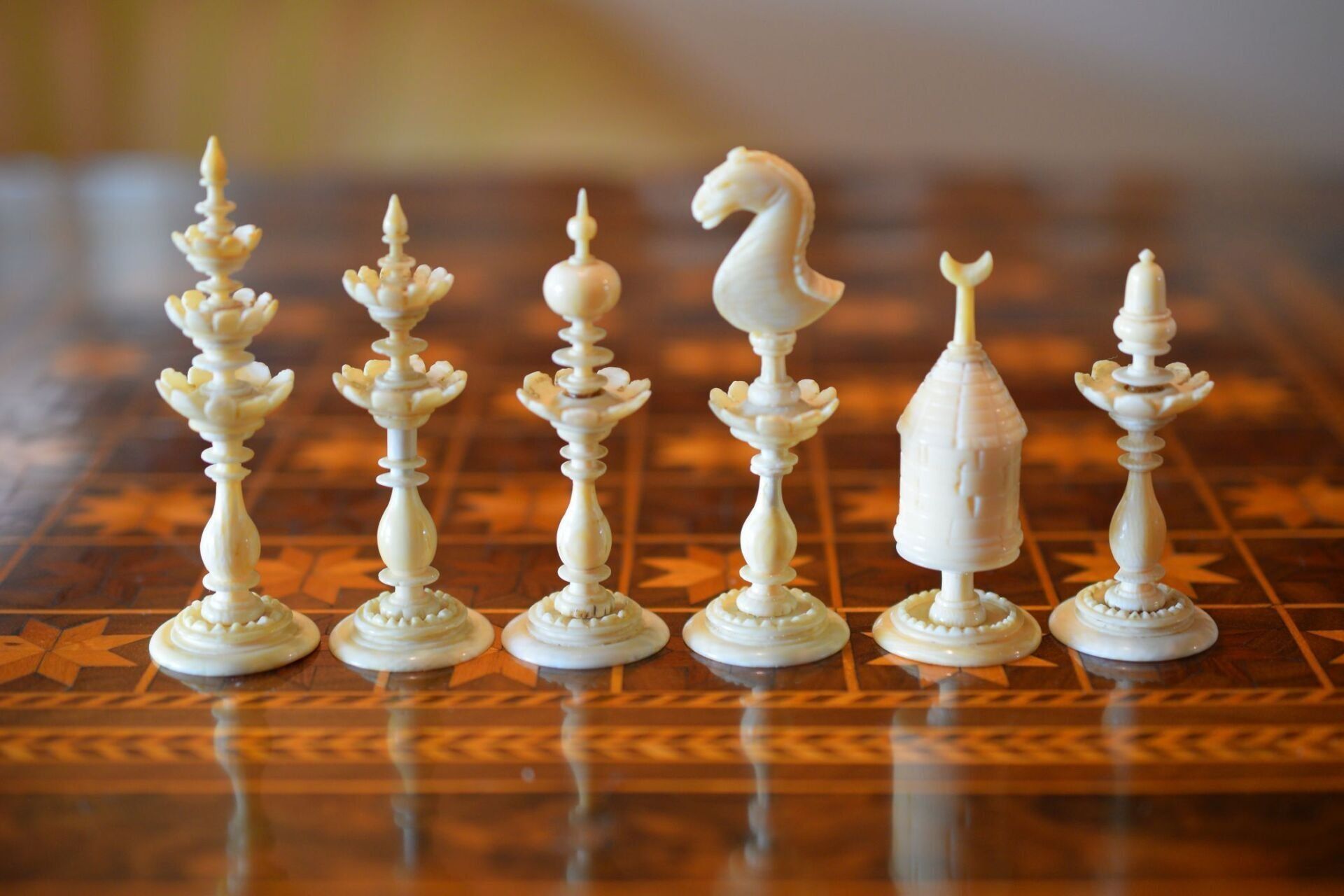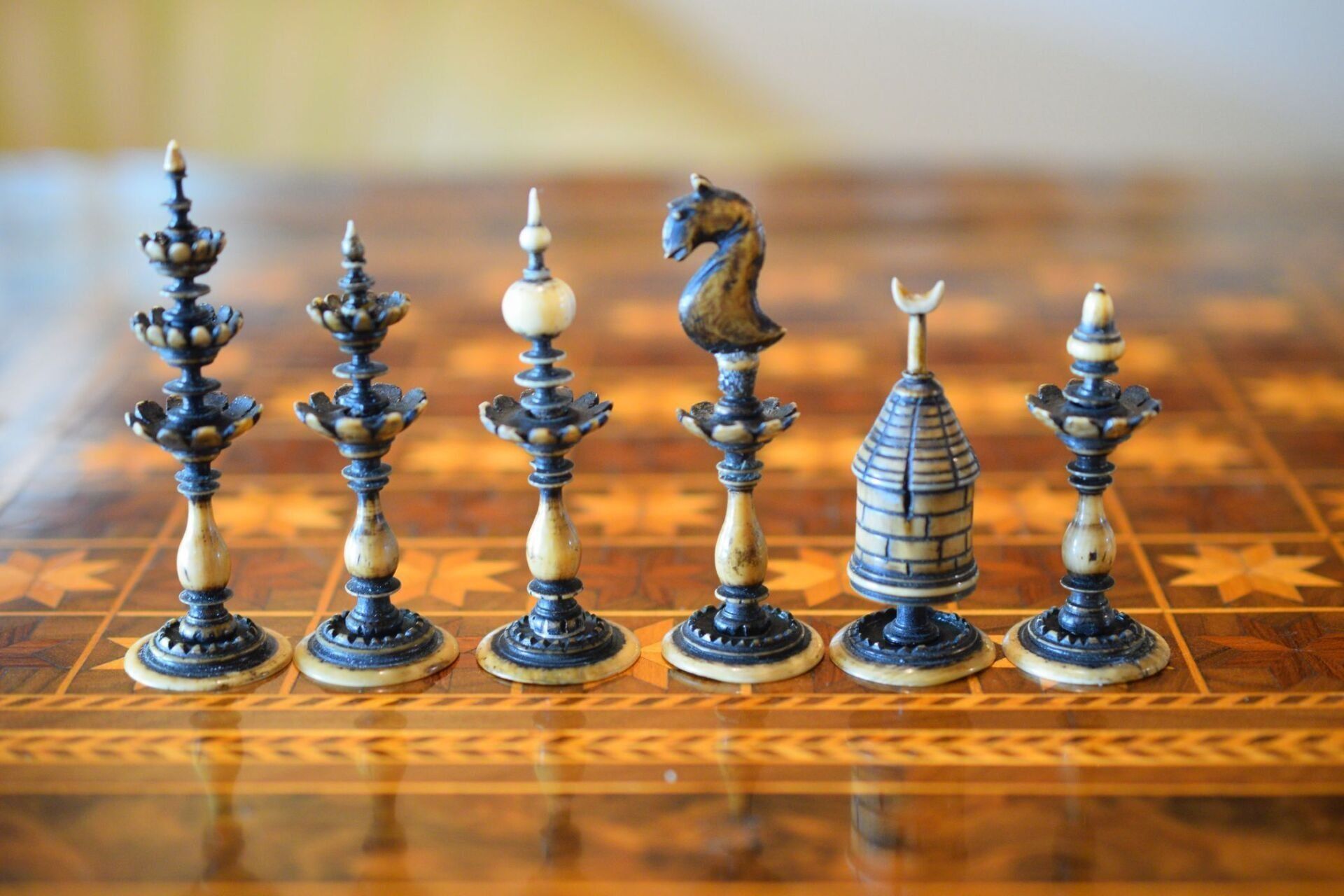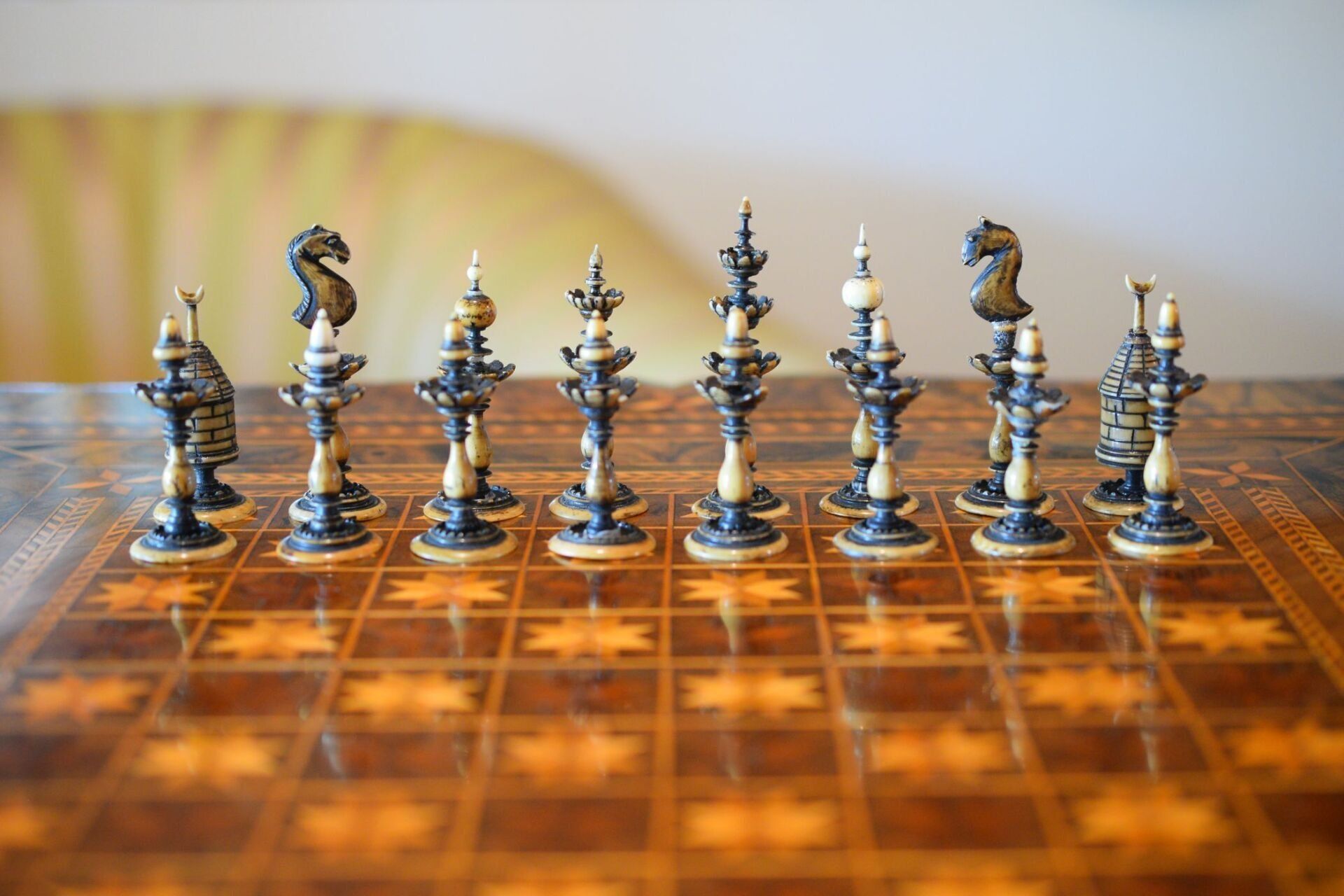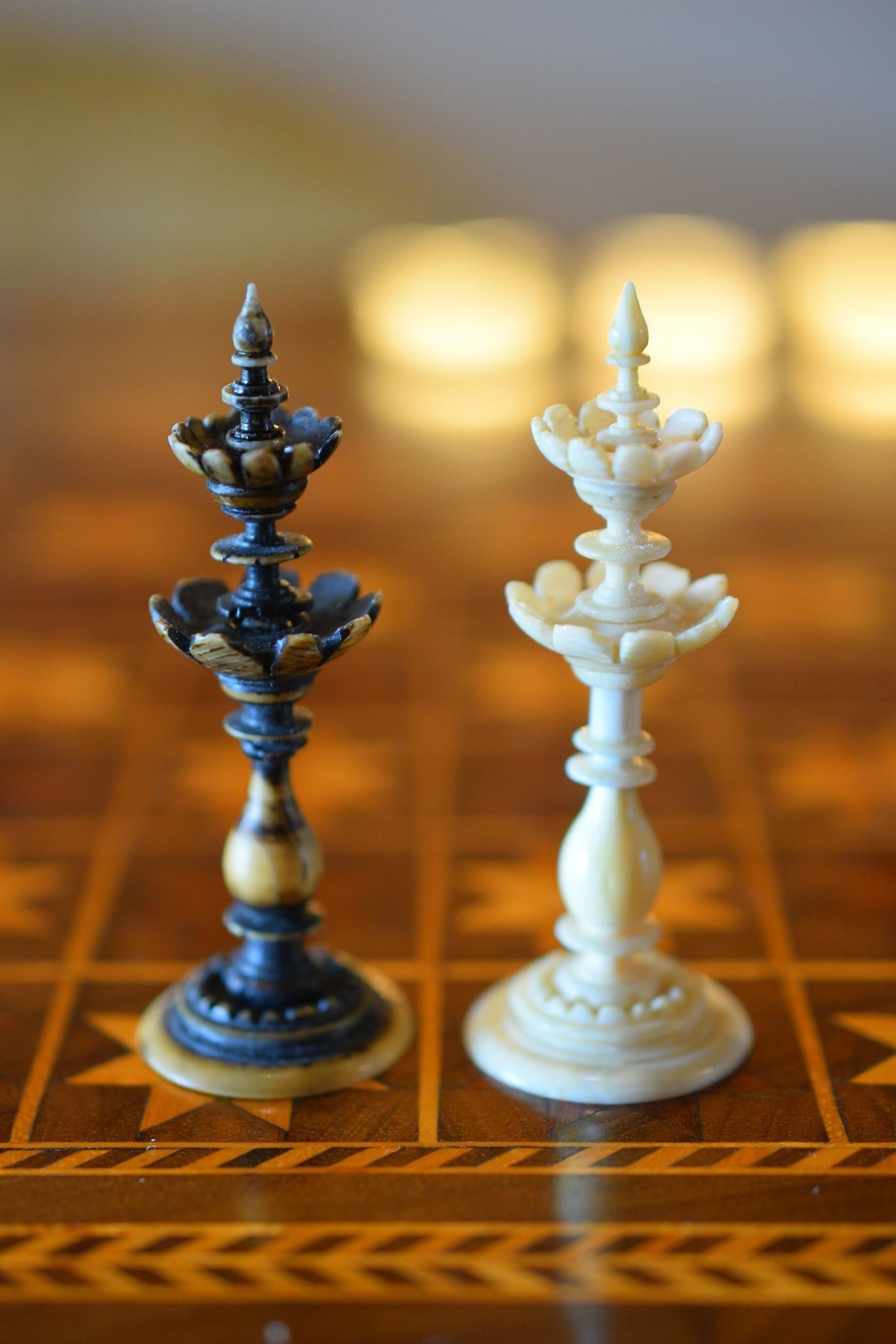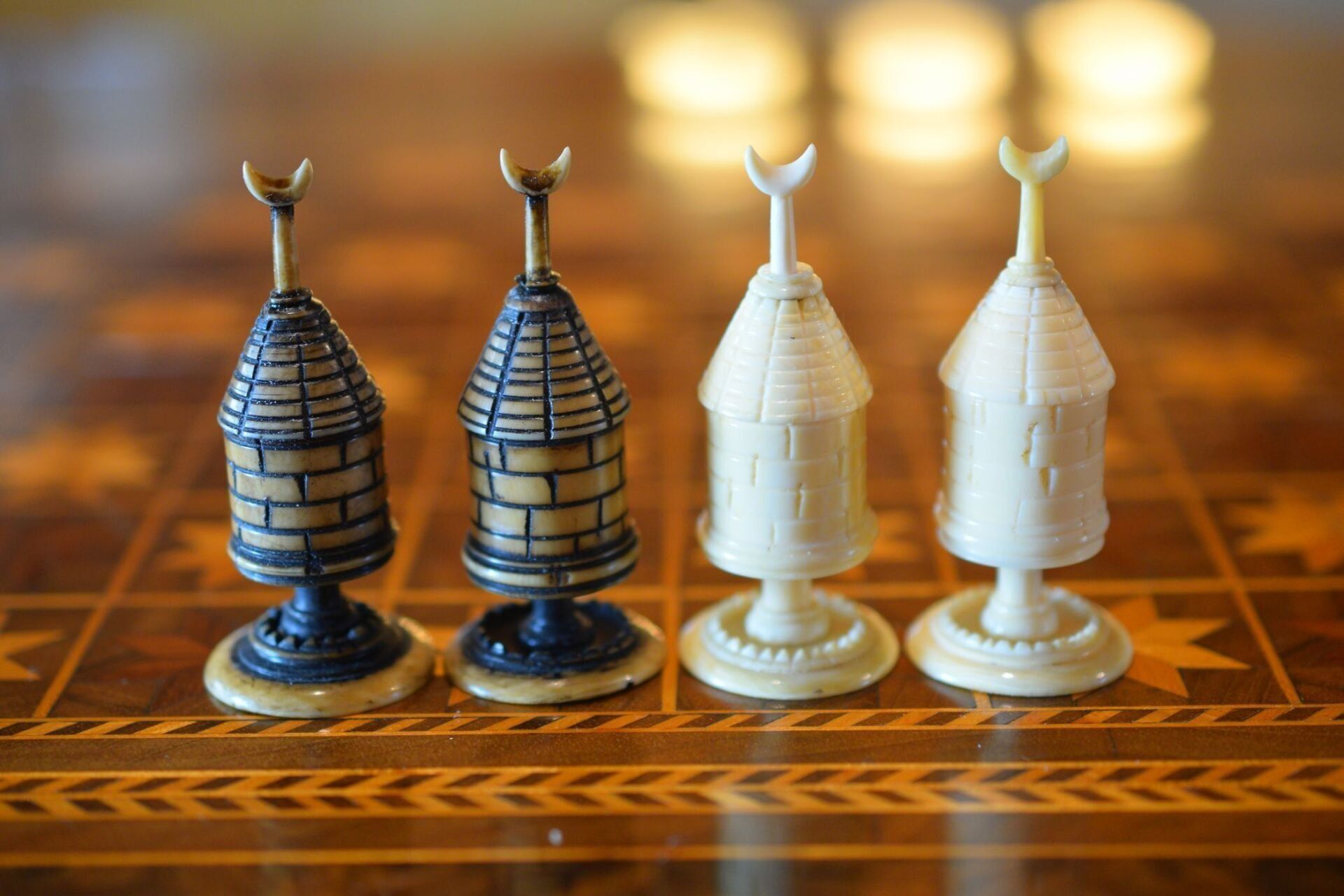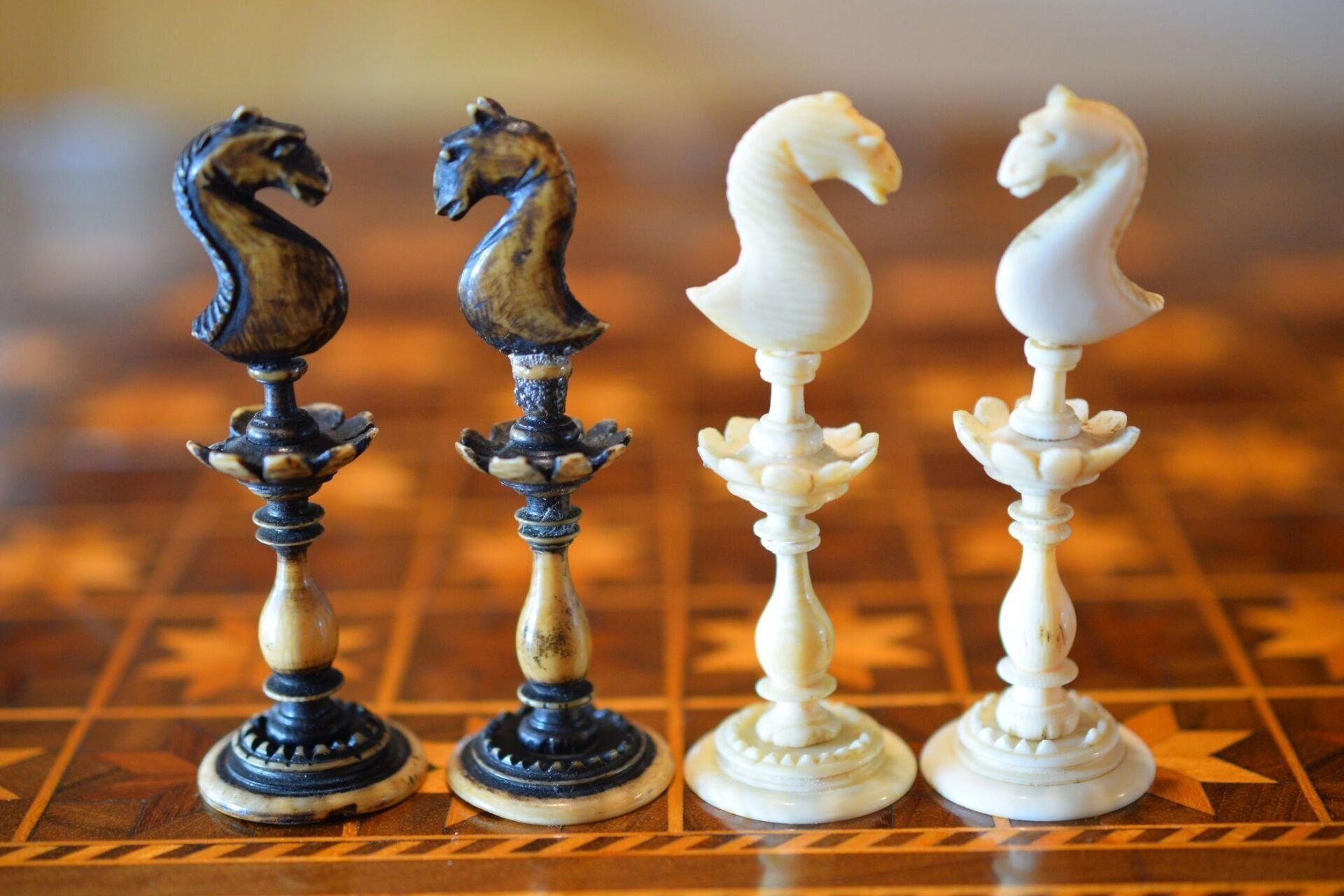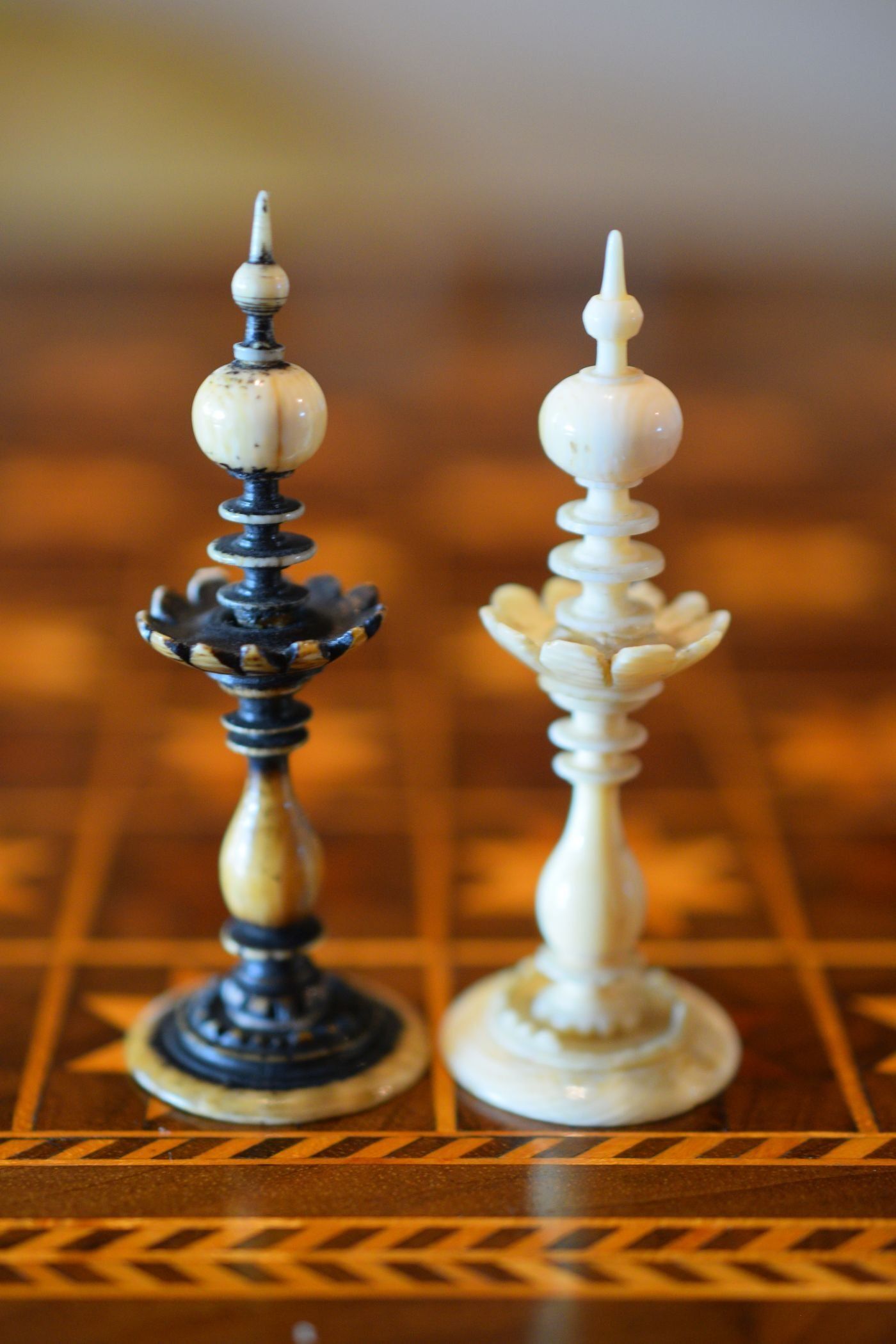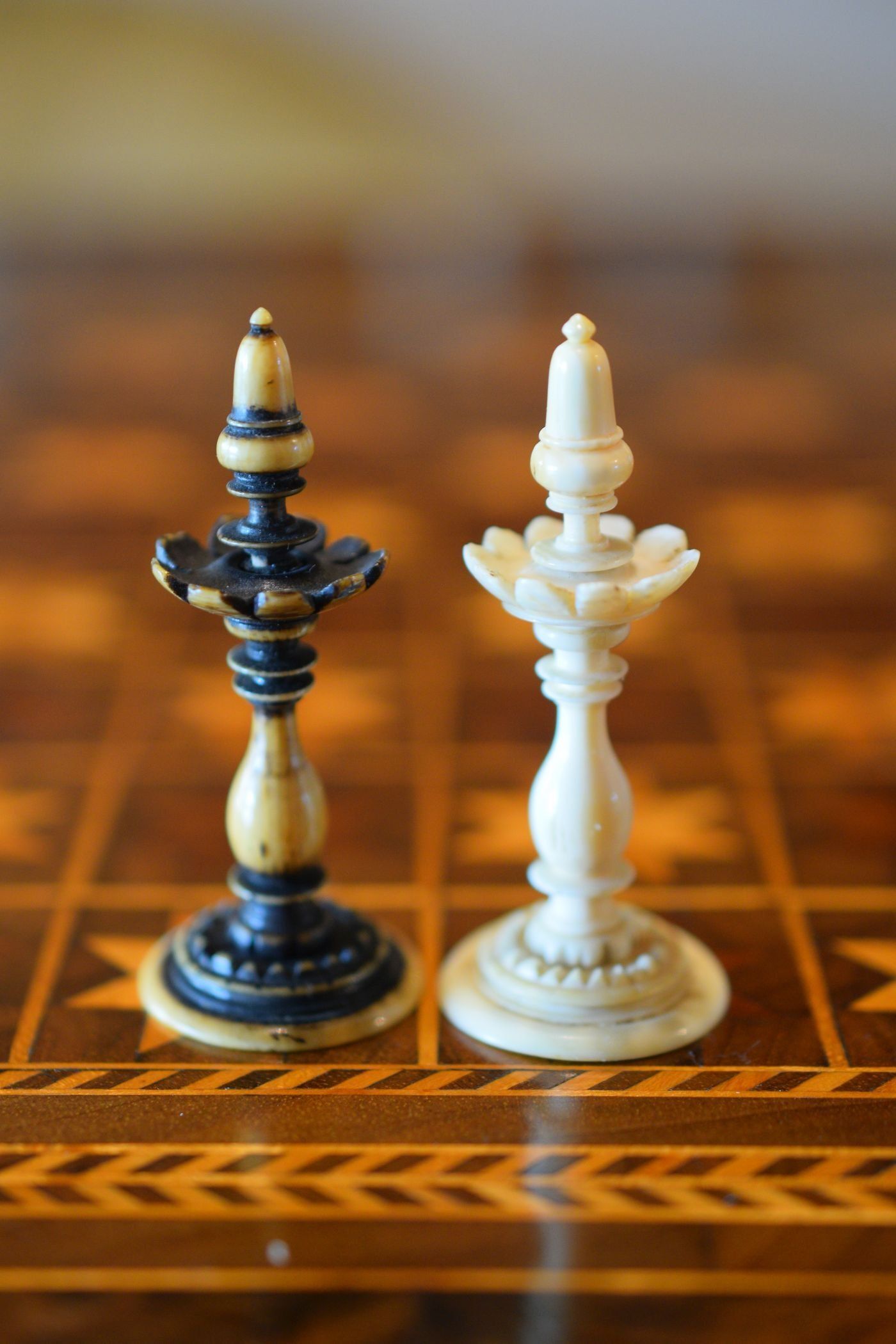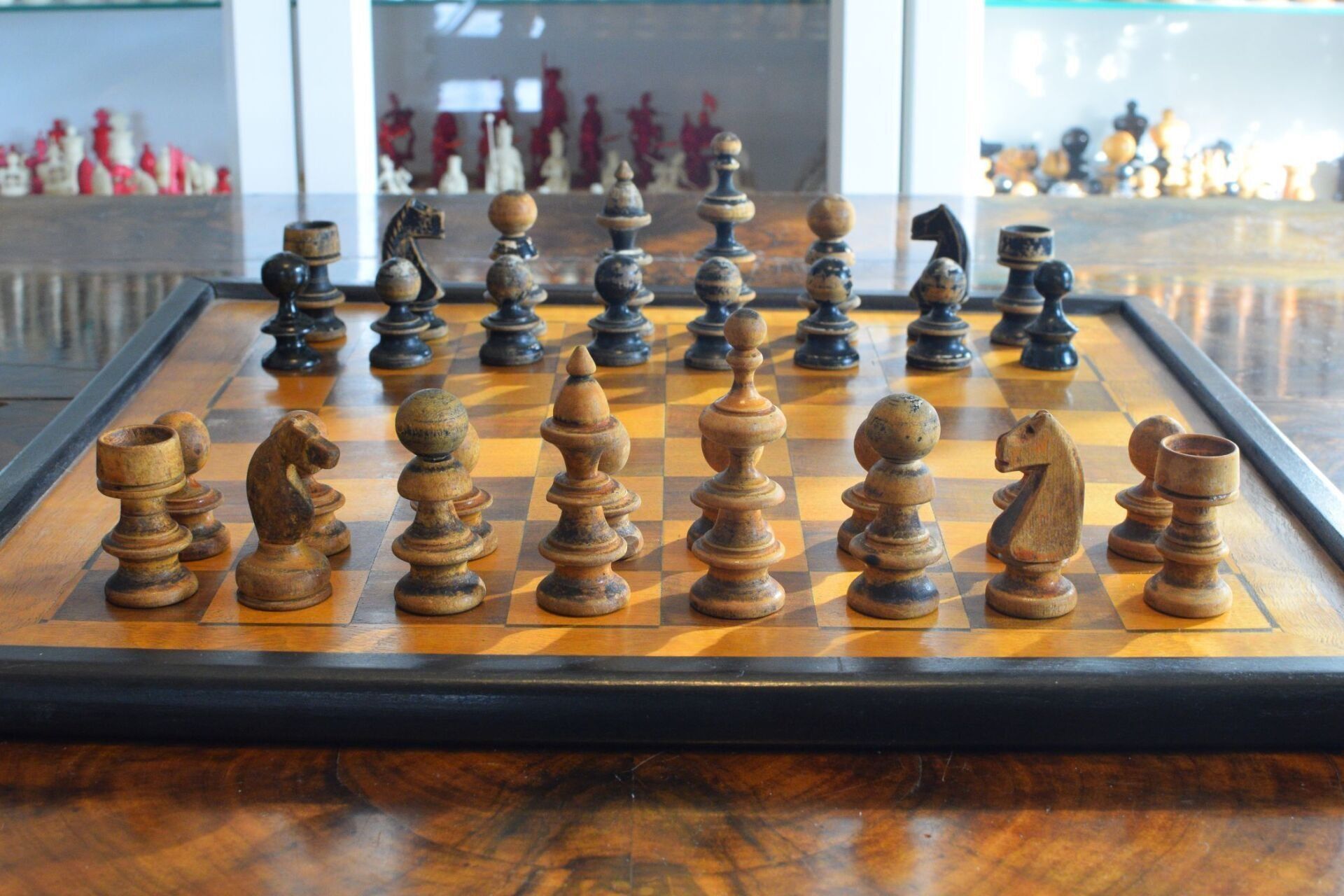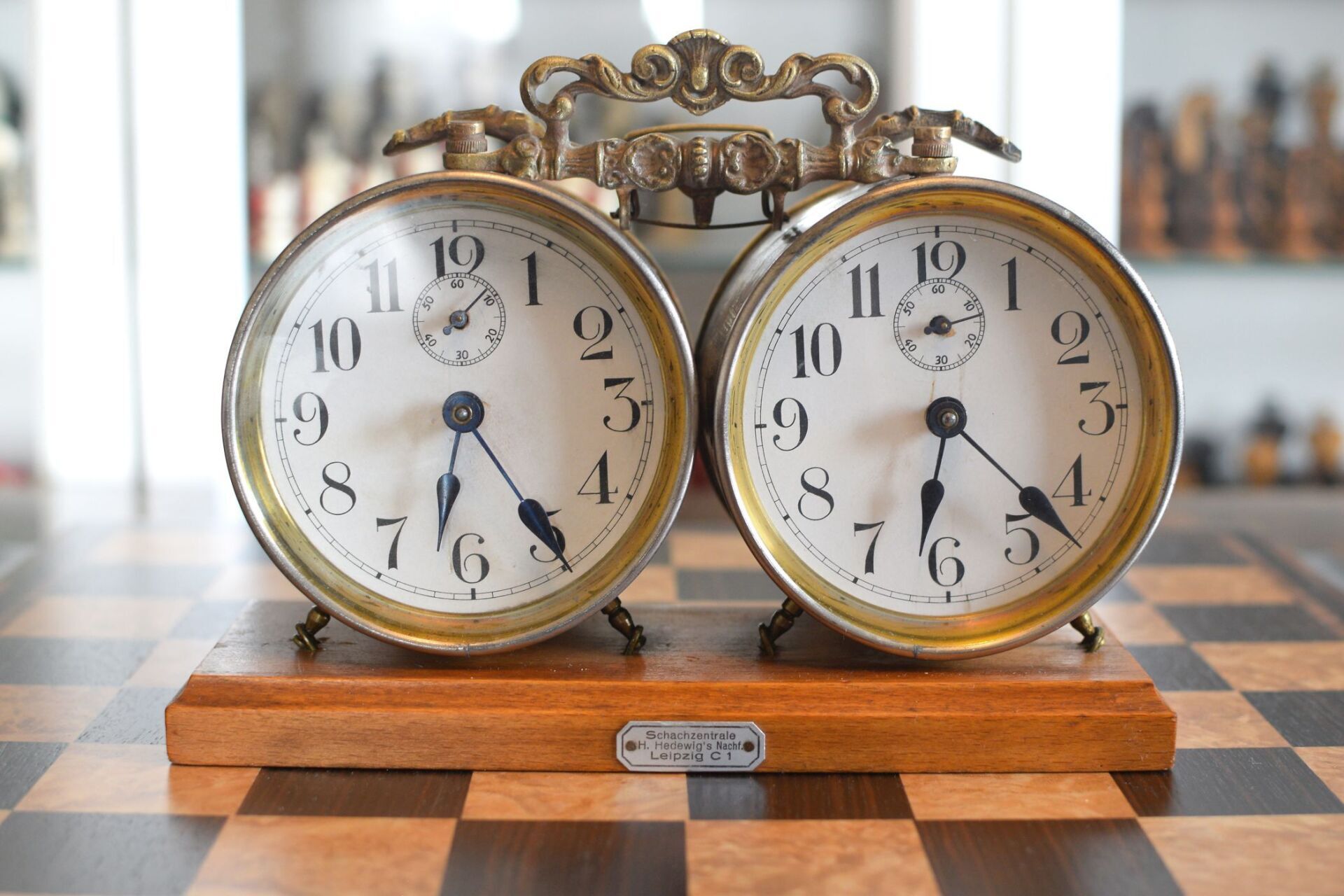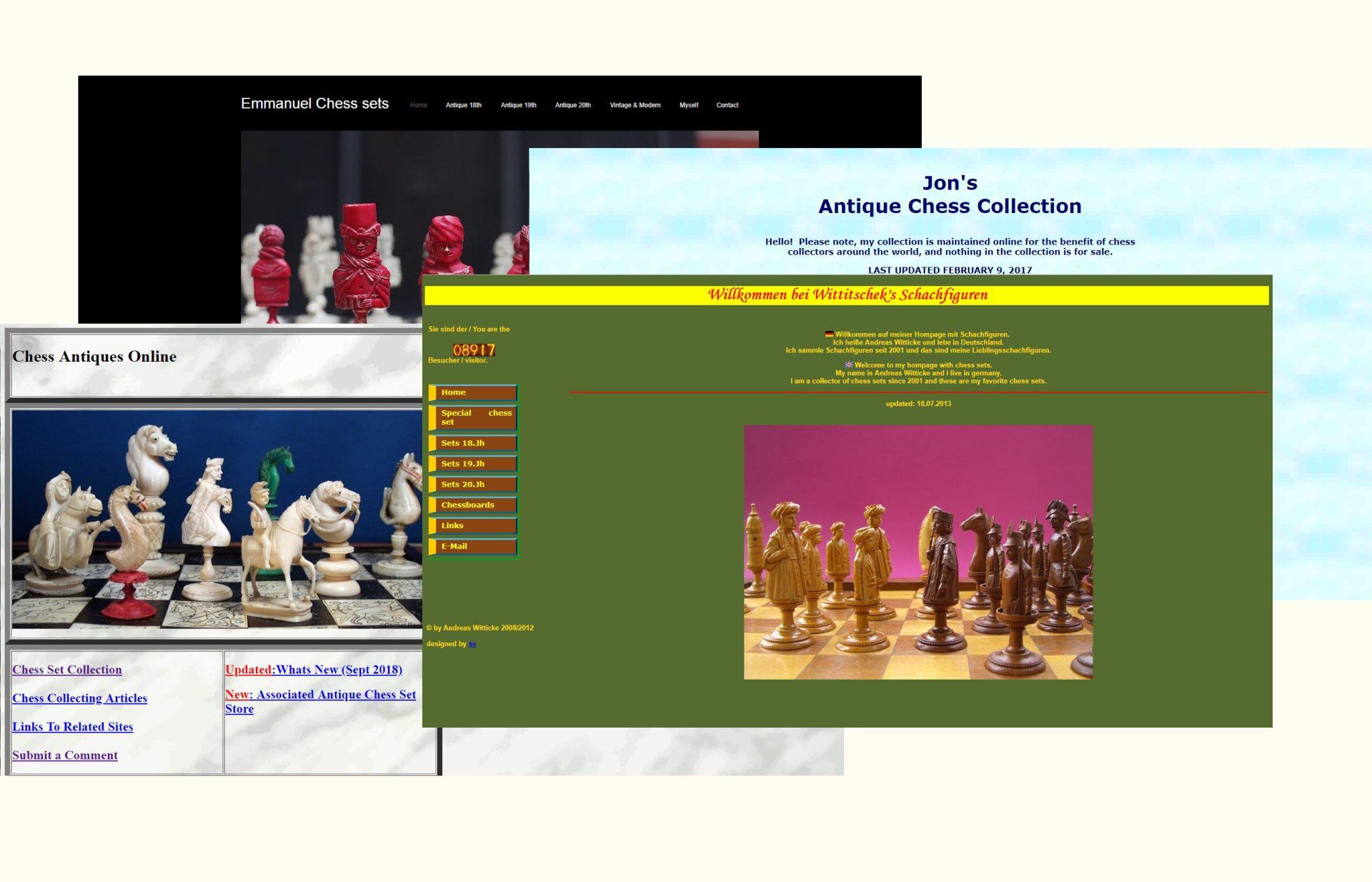German Selenus Chess Set, probably Geislingen, 18th century
This is a very rare and delicate German chess set made in the Selenus style with a king size of 7.2 cm. The pieces are made of ivory, one side natural, the other side stained in black. The kings and queens are made in the Selenus style with three galleries for the king and two galleries for the queen. The galleries itself are surrounded with petal-like decoration. The bishops have, above a gallery and two small discs, a spherical head with a small spike on top. The knights of the same size as the kings and designed as horse heads above a gallery. The rooks as small watch towers on a small pedestal and with a crescent shaped finial. The pawns relatively tall with an acorn shaped head above a gallery. All pieces on round bases with a serrated inner ring and a baluster shaped stem.
From the style of some of the pieces, I believe this to be a set made in the (probably early) 18th century in Geislingen, the former bone and ivory carving center in the South of Germany. In particular, the style of the knights, which almost remind of sea horses, is typical for Geislingen carvers. The bone and ivory carving trade in Geislingen is almost certainly the oldest in Germany. According to archaeological findings, there were already bone turners in the 13th century, during the reign of the Counts of Helfenstein. Exactly when ivory processing began is not entirely clear. There is no documentary evidence until 1791, when the Geislinger Drechslerhandwerk (Geislingen Turners' Guild) was established, the ordinances of which in turn refer to an earlier version of 1663. But the guild constitution of the Geislingen carvers is already traced back to the 15th century. Already at the end of the 16th century Abraham Elias Resch (1560-1609) is mentioned as an artistic bone and ivory turner. From the 18th century, especially Wilhelm Beuoni Knoll (†1764) and his son Michael Knoll are known. From a price list from the 1780s it is known that at that time about 36 bone and ivory turners worked in Geislingen. The town was conveniently located on the trade route between northern and southern Germany and towards northern Italy. At the best times of this trade, in the 16th to 18th century, every fifth person in Geislingen lived from bone and ivory turning.
